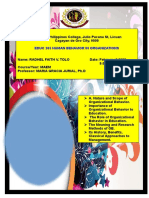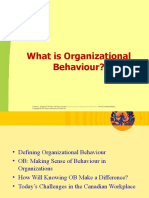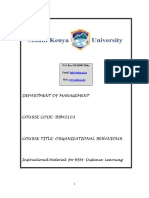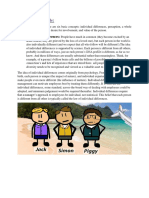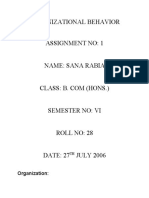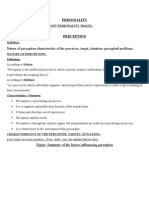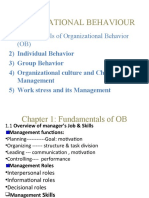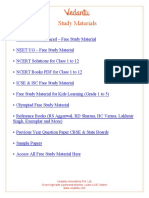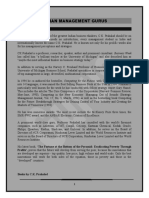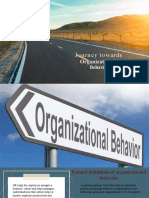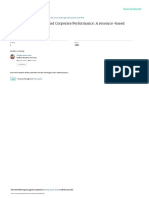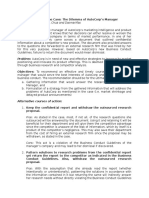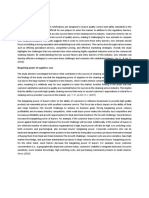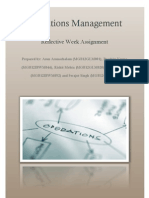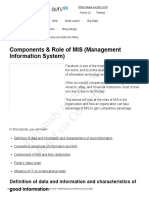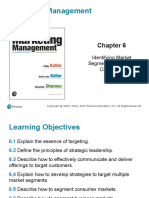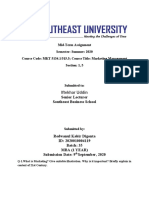0% found this document useful (0 votes)
305 views15 pagesNotes in Organizational Behavior
This document provides an overview of organizational behavior and its history. It discusses how OB helps employees navigate an organization's culture and how culture impacts productivity. The formal study of OB began in the 1890s focusing on time studies and scientific management. Notable early contributors included Taylor, Ford, Gilbreth and Mayo. OB expanded to incorporate human factors through experiments like the Hawthorne Studies. Effective management requires skills in planning, organizing, leading, controlling, and developing people. An organization's culture, diversity, and use of management principles can influence performance.
Uploaded by
Yogi BearCopyright
© © All Rights Reserved
We take content rights seriously. If you suspect this is your content, claim it here.
Available Formats
Download as PDF, TXT or read online on Scribd
0% found this document useful (0 votes)
305 views15 pagesNotes in Organizational Behavior
This document provides an overview of organizational behavior and its history. It discusses how OB helps employees navigate an organization's culture and how culture impacts productivity. The formal study of OB began in the 1890s focusing on time studies and scientific management. Notable early contributors included Taylor, Ford, Gilbreth and Mayo. OB expanded to incorporate human factors through experiments like the Hawthorne Studies. Effective management requires skills in planning, organizing, leading, controlling, and developing people. An organization's culture, diversity, and use of management principles can influence performance.
Uploaded by
Yogi BearCopyright
© © All Rights Reserved
We take content rights seriously. If you suspect this is your content, claim it here.
Available Formats
Download as PDF, TXT or read online on Scribd
/ 15










